With over 19.3 million acres of forest land covering 53% of the state, Michigan is home to a vast timberland acreage—the fifth largest in the entire United States! (Michigan.gov)
As a new owner of private forested land, there are a few ways you can make passive income off your new investment, including timber harvesting, raising livestock, leasing your land to hunters, and more. Keep reading as we cover eight different ways you can make money from your land.
1. Sell Your Land
As a new landowner, selling your raw land may be the quickest way to make money from the forested property you own. Someone is guaranteed to take interest and offer you a significant amount of money for your raw, undeveloped land.
However, selling your land completely will take away the potential for you to make regular passive income from its natural resources or from leases that allow others to use your land.
Nevertheless, your raw land can be worth a lot to a potential buyer. The location, timber value, natural resources, and market conditions will all play a role in the value of your raw land.
To get your timber value assessed, we recommend consulting with an expert like the timber experts at Buskirk Lumber. Operating in the state of Michigan for over 100 years, we have a dedicated logging crew to provide assessments and pay top dollar for standing timber. Send us a message.
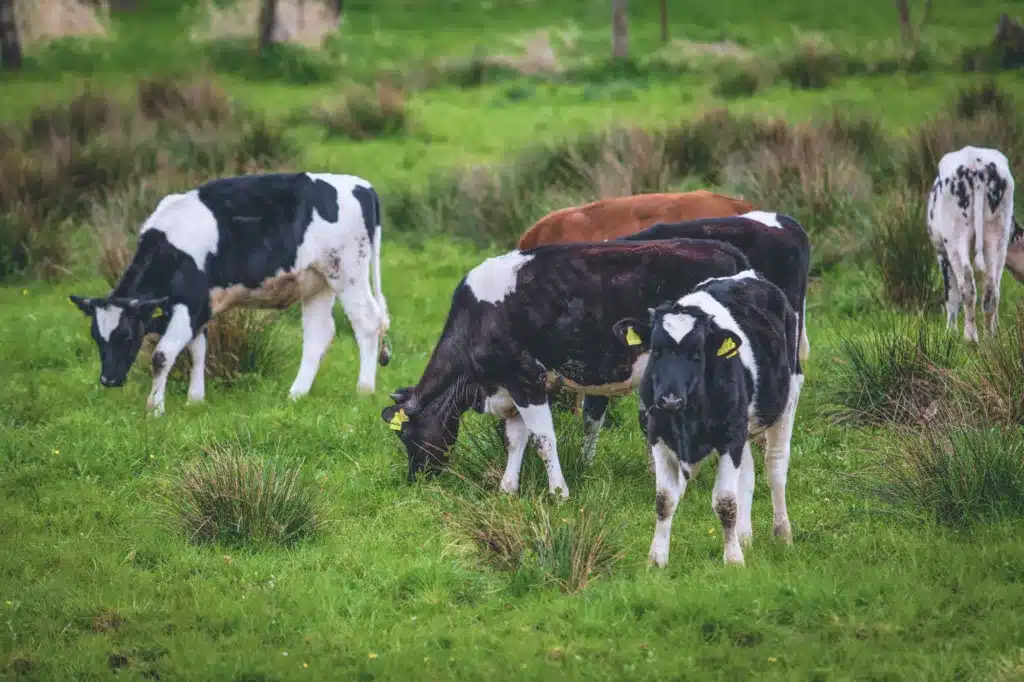
2. Livestock Raising
As a new landowner, raising livestock like cattle, dairy cows, or sheep is a good use of your raw land and can provide a steady income as you sell the byproducts.
Raising livestock will allow you to be self-sufficient, utilize the land resources available, and steadily profit from the production of meat, dairy products, and wool.
Based on the needs of each animal, you should determine if your land is suitable. Do the research on different breeds and species and learn about their needs. You may need to prepare your raw land by harvesting trees or thinning out woodlots and constructing barns or fencing.
It is important that you also obtain the necessary permits and licenses to raise livestock in order to comply with local regulations. Please consult your local authorities for specific requirements and guidelines.
From there, you will need to source high-quality, healthy livestock and provide proper feeding and health management. This includes proper animal care, monitoring for illness, and managing the breeding process.
All that’s left is to get the word out about selling your livestock and their products, like diary, meat, milk, eggs, or fiber.
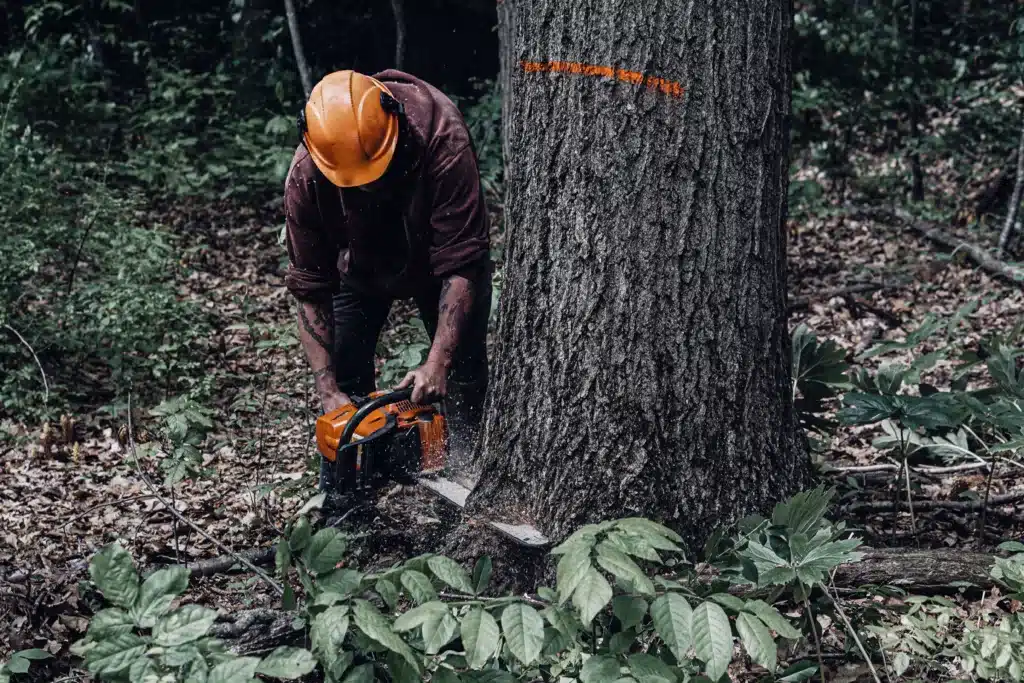
3. Harvesting Standing Timber
Harvesting the standing timber on your new land may be the most profitable way to make money off your land—selling your trees to be harvested by a sawmill allows you to own, enjoy and profit off your land at the same time.
Consult with timber harvesting professionals (like Buskirk Lumber) to determine:
- Most sustainable logging practices
- Optimal timing and harvest schedule
- How much money your trees are worth
Because of the nature, quality, and durability of hardwoods in comparison to softwoods, they will generally command a higher price on the market. By knowing the woodlot you own and the types of trees on your property, you can get the best estimate for what your timber’s worth.
Hardwoods vs. Softwoods: A Guide for Landowners
Size, species, maturity, and quality will also play a role in how much your timber is worth. For an assessment of your new land in West Michigan, you can call our timber procurement experts at 800-860-WOOD. We’re knowledgeable with all current hardwood prices and we’ve been practicing sustainable standing timber harvesting throughout Michigan for over 100 years!
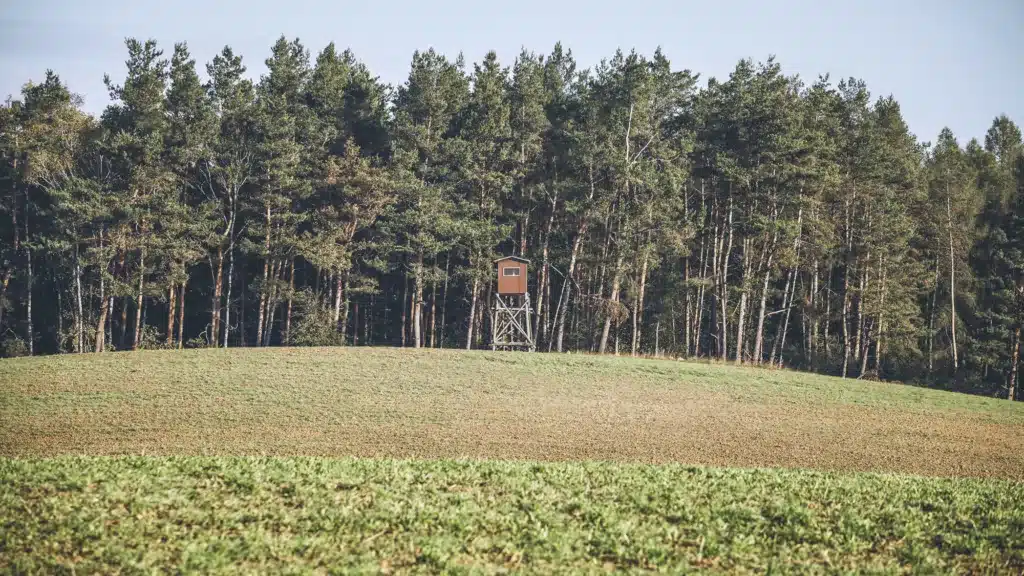
4. Leasing Your Land for Hunting
One of the best ways to generate passive income from your private land is through leasing programs, like hunting leases. A hunting lease does not require much work on your part and has the added benefit of managing animals on your property.
You can offer a few different types of leases, including yearly or daily leases.
To get started with a hunting lease, you need to first:
- Assess the land. Your land may or may not be suitable for hunting. You should consider which wildlife species inhabit your land, safety considerations, and legal regulations regarding hunting in your area. You will need to comply with all applicable laws and stay updated on changes in hunting regulations and permit requirements so that you can maintain legal operations.
- Determine hunting options. Decide what hunting opportunities you can offer on your private land, like big or small game hunting or waterfowl. Along with the different types of hunting, you will need familiarity with hunting seasons, bag limits, and other regulations relating to that type of hunting.
- Consider liability issues. Renting your land for hunting can come with liability issues that may require a lawyer’s consultation so that you can understand your responsibilities, liabilities, and the necessary permits or licenses you may need to obtain. You should also consider getting liability insurance coverage to protect yourself against potential accidents or injuries that may occur on your property.
- Develop lease agreements. You will need to establish comprehensive lease contracts that outline the terms and conditions for hunters using your land, including duration of the lease, hunting rules and regulations, fees or compensation, safety guidelines, and any specific restrictions or requirements.
- Find responsible hunters. You will need to attract potential hunters to lease your land by means of marketing, networking, or referrals. You may want to vet them to make sure they are experienced and responsible and that they will follow your lease guidelines.
5. Leasing Land to Investors
Leasing your new land to investors may be a way to generate income while utilizing your new property.
Leasing your land to investors will involve the same considerations as leasing out to hunters. These considerations include:
- Determining the purpose of the land and performing an assessment. Evaluate your land and its characteristics and potential. To identify the types of investors that would be interested in your land, you should determine the intended use of your land, whether for agricultural, renewable energy, commercial developments, or other purposes.
- Getting professional advice. You should consult with professionals who have experience in the specific industry or field you’re targeting. You will also need to prepare clear and comprehensive documentation for leasing your land. This includes lease agreements, contracts, and any other legal documents necessary to outline the terms, conditions, and obligations of both parties involved. A lawyer should review and assist in drafting these documents.
- Marketing to investors. You will need to attract investors to your land’s potential by using various marketing channels like real estate websites, industry-specific publications, networking events, and reaching out to relevant business associations or organizations. You will want to screen potential investors to ensure they have the financial capability, expertise, and track record necessary to carry out the intended investment.
- Negotiating the teams of the lease. Engage in negotiations with interested investors to determine the lease terms that are mutually beneficial. These terms may include lease duration and any specific requirements or restrictions related to the investment.

6. Tap Trees for Syrup
Certain tree species can be tapped for sap for syrup production. In order to profit from your forested land in this manner, you must have a significant number of any of the following in your woodlot:
- Sugar Maple
- Red Maple
- Black Maple
- Silver Maple
- Boxelder
While less popular, birch, beech, and other sappy trees may also be tapped to make syrup.
For highest production volume, sugar maples are ideal. On average, a healthy sugar maple tree can produce around 10 to 20 gallons of sap per season. It takes about 40 to 50 gallons of this sap to produce one gallon of maple syrup. You would need to tap multiple trees to obtain a sufficient quantity of sap for syrup production.
Other maple species, like red, black, silver, or boxelder, typically yield a lower volume of sap compared to sugar maples. The sap-to-syrup ratio for these species may vary, but it can take around 60 to 80 gallons of sap to produce one gallon of syrup.
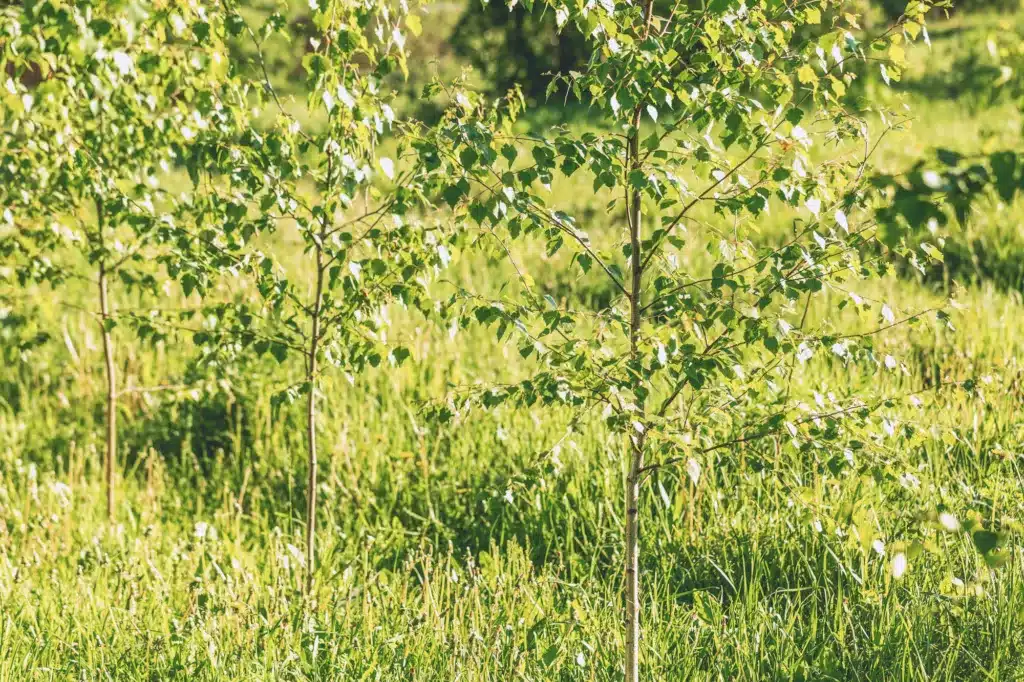
7. Harvest In-Demand Saplings
Selling saplings from your property may be another way to make extra income from your forested land.
Certain saplings, like fruit trees, ornamental trees, or timber trees, are more in-demand than others for personal or commercial uses.
To harvest saplings from your property, you will need to:
- Identify the species. Assess your forested land to determine which species are present and which ones you can harvest saplings from.
- Get necessary permits. Consult with local authorities to ensure you have the permission to harvest saplings from your land. This may vary by location.
- Select healthy saplings. Choose trees with good growth potential and healthy stems and root systems.
- Harvest sustainably. Harvest in such a way that promotes your woodlot’s long-term health and regeneration. Do not over-harvest. We advise you to consult with a forestry expert for sustainable harvesting best practices.
- Dig and transplant. Use proper tools to dig out the saplings without damaging the root system. The saplings must immediately be transplanted to promote successful establishment.
- Sell the saplings. You will need to market to potential buyers using the proper channels, whether local nurseries, online platforms, or networking events in the community.
As a timber harvester in Michigan for over 100 years, we harvest mature trees to leave room in the stand for younger, higher oxygen-producing trees as part of our sustainable harvesting technique. If your woodlot is mostly mature trees, we recommend you harvest them and sell them to a sawmill to promote the growth of younger trees.
We are a sawmill with a full logging crew and logging fleet to complete the full process of harvesting and transportation, so you don’t have to outsource anything to a third party. Please contact us if you have mature hardwoods on your property that you’re interested in selling for cash!
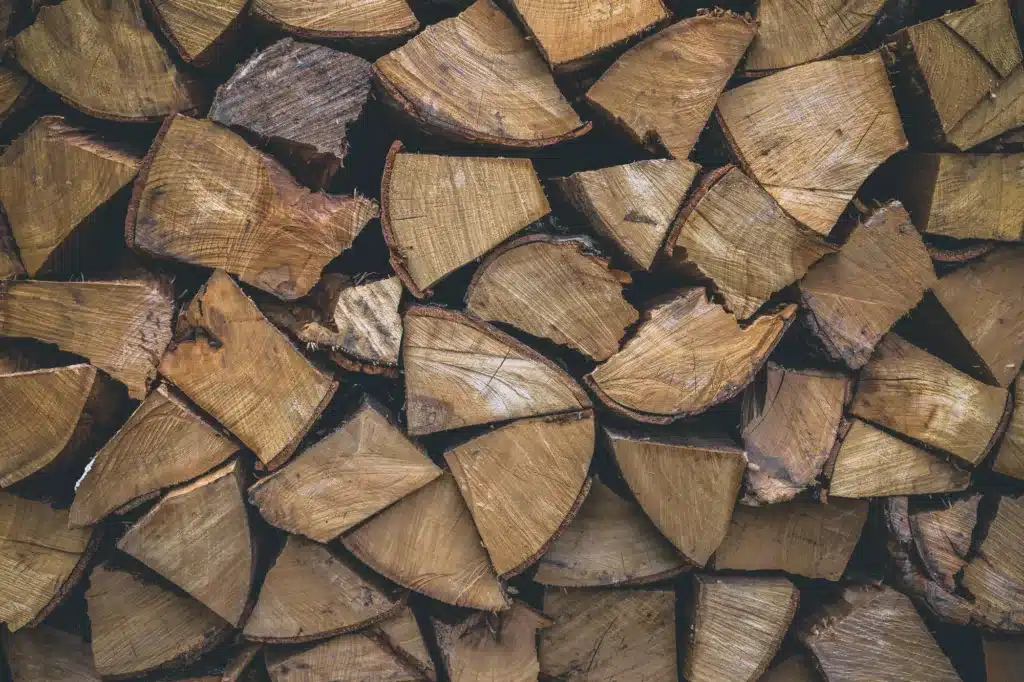
8. Sell Cords of Firewood
Cutting down your trees for firewood may be a great way to keep your woodlot managed, while making money in the process!
However, you will need to use potentially dangerous equipment and have the capability to move heavy logs. You will also need to put in a lot of hard work depending on the size of your woodlot or your goals for selling firewood.
Many people will be looking for their firewood in cords, or generally 4 feet x 4 feet x 8 feet cuts. Bundling firewood for sale may also require extra labor.
Do you have a large woodlot with mature hardwoods? Harvesting your standing timber and selling it to a sawmill may be a wiser alternative. Learn more.
If you have any questions on the value of the timber in your private woodlot, please feel free to call our timber experts at 800-860-WOOD.

